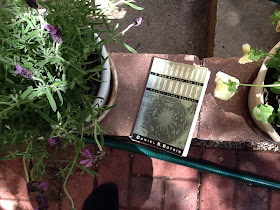In
an essay entitled Mechanism of Utopia
Emil Cioran (1911-1995), the notoriously pessimistic Romanian philosopher,
declared his surprise that “riots do not break out every day: massacres,
unspeakable carnage, a doomsday chaos.”[1] It is not, he concluded, that our hatred for each
other is insufficient; rather, we are saved by the being too mediocre to fully act
upon our mutual odium. The balance of
these opposing propensities permits us to soldier on. More affably, one might just as well wonder
why peace and kindredness are not more stable and enduring. Certainly we profess to desiring them. Sunnier times do not prevail, one suspects, not
merely because our baser natures assert themselves and we disincline to tame
them, but because the better and worse aspects of our natures are blended
through the human mix, rather like the fruit in a Christmas pudding. A sultana in every forkful; a little bit of
anger, or condescension, or pride in every charitable act.
Utopian
visions are born of destitution, in the depths of which one feels there is a
better world just within reach. And when
this destitution is at its most profound, the utopian wants everything to
change. “Air annoys you.” Cioran wrote, “let
it be transformed.” The utopian imagines
that all can, in fact, be changed,
even herself! That is, her view is that
human nature is such that the rages of our bruter natures can be quelled. Apocalyptic visions are utopias without the
swaggering self-confidence in the unbounded mutability of our natures. The Apocalyptic looks at her derelict conditions
and sees only ruination.
Ecological
utopias have two complementary dimensions: one orients towards a better place,
the other towards a better time. That
better place may be one that is currently blasted, but now re-imagined by
ecological and social engineers (the sustainable city), or alternatively, that
better place can turn away from the contemporary landscape, desiring to build
elsewhere: the rural commune (the sustainable subdivision), or the planetary
escape (Mars Now!). Utopias models themselves
upon a different age, former times or an imagined future. In this sense utopia (without place) can also
be utemporalis (without a time). The “without”
in both terms represent the absence of this particular here and now – utopia imagining
a place that is not here, utemporalis imagine a time that has passed or is yet
to come. Ecological utopias can be restorative,
a hankering after a historical Gold Age (for ecologists it will not be the world
of the Athenian citizen rather the world of the plains hunter). Alternatively, utopia it can be directed
towards a bright new future, a non-analogue future where the principles of
sound design conceive a world that has never been seen before.




